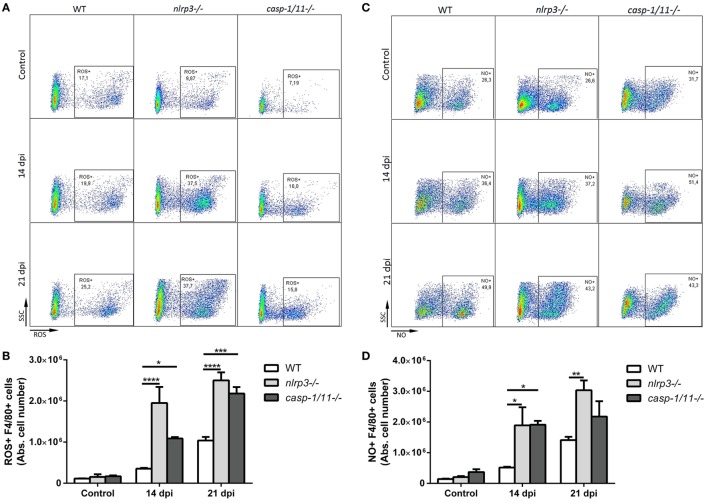Figure 3.
Hepatic macrophages from NLRP3- and caspase-1/11-deficient mice exhibit increased intracellular production of reactive oxygen species (ROS) and nitric oxide. Intrahepatic leukocytes from infected and uninfected controls from wild type (WT), nlrp3−/−, and caspase-1/11−/− mice were stimulated with PMA and ionomycin. ROS were detected within cells by labeling with the oxidation-sensitive dye H2DCFDA and NO was measured using DAF-FM as described in Section “Materials and Methods.” Then, cells were stained with anti-F4/80. (A) Representative dot plots and (B) absolute number of ROS+F4/80+ intrahepatic cells from WT, nlrp3−/−, and caspase-1/11−/− mice. (C) Representative dot plots and (D) absolute number of hepatic NO+F4/80+ cells from WT, nlrp3−/−, and caspase-1/11−/− mice measured by flow cytometry. Gate strategy is depicted in Figure S1 in Supplementary Material. Data are shown as mean ± SEM from one of three representative experiments; n = 3–6 mice per group. Statistical significance was evaluated by two-way ANOVA followed by Bonferroni post hoc test. *p < 0.05; **p < 0.01; ***p < 0.001.

